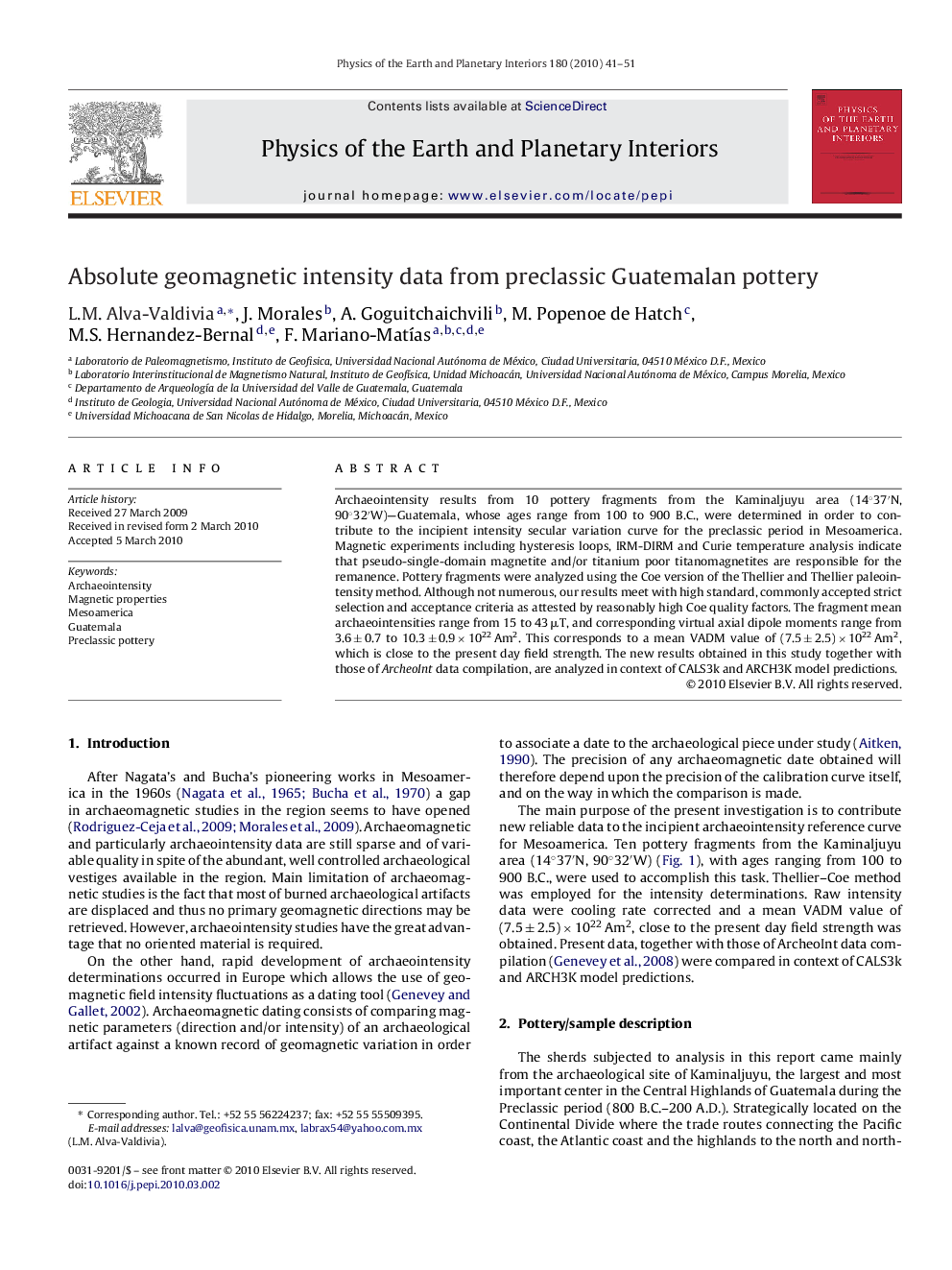| Article ID | Journal | Published Year | Pages | File Type |
|---|---|---|---|---|
| 4742192 | Physics of the Earth and Planetary Interiors | 2010 | 11 Pages |
Archaeointensity results from 10 pottery fragments from the Kaminaljuyu area (14°37′N, 90°32′W)—Guatemala, whose ages range from 100 to 900 B.C., were determined in order to contribute to the incipient intensity secular variation curve for the preclassic period in Mesoamerica. Magnetic experiments including hysteresis loops, IRM-DIRM and Curie temperature analysis indicate that pseudo-single-domain magnetite and/or titanium poor titanomagnetites are responsible for the remanence. Pottery fragments were analyzed using the Coe version of the Thellier and Thellier paleointensity method. Although not numerous, our results meet with high standard, commonly accepted strict selection and acceptance criteria as attested by reasonably high Coe quality factors. The fragment mean archaeointensities range from 15 to 43 μT, and corresponding virtual axial dipole moments range from 3.6 ± 0.7 to 10.3 ± 0.9 × 1022 Am2. This corresponds to a mean VADM value of (7.5 ± 2.5) × 1022 Am2, which is close to the present day field strength. The new results obtained in this study together with those of ArcheoInt data compilation, are analyzed in context of CALS3k and ARCH3K model predictions.
